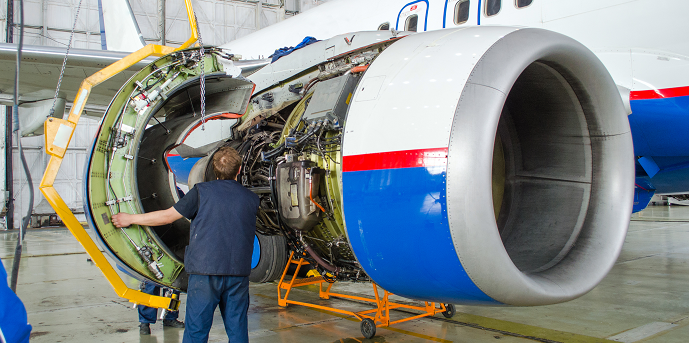Considerations by Sofema Aviation Services (SAS)
The use of composite construction is rapidly increasing in current and future airframes and structures. Composite and in particular sandwich structures provide an efficient method to increase bending rigidity without a significant increase in structural weight.
The damage tolerance evaluation of structure is intended to ensure, that should fatigue, intrinsic/discrete damage, large-area manufacturing flaws, or severe accidental damage occur within the operational life of the aircraft, the remaining structure will withstand reasonable loads without failure or excessive structural deformation until the damage is detected.
An inspection program should be developed consisting of frequency, extent, and methods of inspection for inclusion in the maintenance plan.
Inspection intervals should be established such that the damage will be detected between the time it initially becomes detectable and the time at which the extent of damage reaches the limits for required residual strength capability.
Challenges to achieve an optimum inspection are impacted by the following:
- Clean vs dirty surfaces
- Dull vs glossy finishes
- Lighting
- Viewing distance
- Visual angle
- Correlation of identified interior damage with a surface defect
- Experience and training
- Combination of visual and tactile inspections
Manufacturing flaws or in-service loads will result in an unsymmetrical damage state. Cores tend to absorb and retain water which often reduces mechanical properties as well as increasing the structural weight.
Categories of Composite Damage
Category 1 – Allowable damage that may go undetected by scheduled or direct field inspection, allowable manufacturing defects; damage below Allowable Damage Limit (ADL), e.g. barely visible impact damage (BVID).
Category 2 – Damage detected by scheduled or directed field inspection at specified intervals, e.g. exterior skin damage, interior stringer blade damage.
Category 3 – Obvious damage detected within a few flights, e.g. accidental damage to lower fuselage or lost bonded repair patch.
Category 4 Discrete source damage immediately known by the pilot to limit flight manoeuvres, e.g. rotor disk cut through fuselage or severe rudder lightning damage.
Category 5 Severe damage created by anomalous ground or flight events. Such damage represents damage/manufacturing events that are outside of design considerations.
Nonvisible or Barely Visible Impact Damage (BVID) or defects that are not detectable during manufacturing inspections and service inspections must withstand ultimate load and not impair the operation of the aircraft for its lifetime. In this region, it is assumed that the damage may never be discovered during the aircraft’s lifetime and must support the ultimate design load.
Once the damage is observed, which is larger than the Allowable Damage Limit (ADL), the damage must be repaired when discovered.
This damage, which is detectable using selected service inspections, must survive repeated loads for the specified inspection interval (with high confidence) and must withstand a once per lifetime load (Limit Load).
The visual inspection process
It is considered good practice to pre-inspect the general inspection area for cleanliness, foreign objects, deformed or missing fasteners, the security of parts, corrosion and damage before a visual inspection. Areas to be inspected should be carefully pre-cleaned without removing indication of damage and without damaging any surface treatment.
Inspection procedures applying to painted composite airframe structures should be presented detailing the identification of:
- Surface cracks, using a flashlight
- Dis-bonds
- Chipped, missing, loose or blistered paint
Note – Dis-bonds are typically difficult to see often mechanical distortion is the only means to determine whether any bonding exists.
Further Guidance
Sofema Aviation Services & Sofema Online provide training for aircraft inspectors delivered as classroom, webinar & online. For Details please email team@sassofia.com
Next Steps
Follow this link to our Library to find & Download related documents for Free.
Tags:
aviation, Aviation Maintenance, Aircraft Inspection, SAS blogs, Aircraft Damage, Composite Damage Inspection





